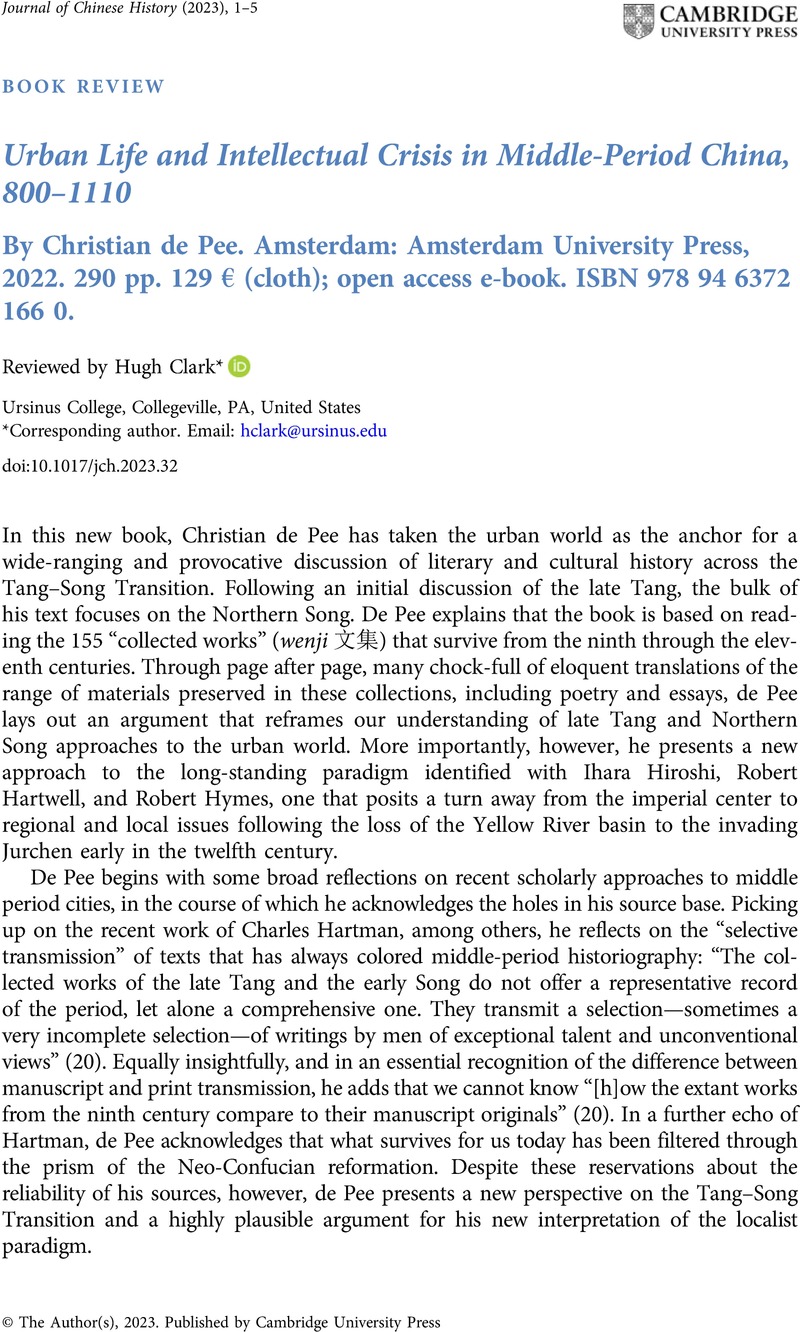No CrossRef data available.
Article contents
Urban Life and Intellectual Crisis in Middle-Period China, 800–1110 By Christian de Pee. Amsterdam: Amsterdam University Press, 2022. 290 pp. 129 € (cloth); open access e-book. ISBN 978 94 6372 166 0.
Review products
Urban Life and Intellectual Crisis in Middle-Period China, 800–1110 By Christian de Pee. Amsterdam: Amsterdam University Press, 2022. 290 pp. 129 € (cloth); open access e-book. ISBN 978 94 6372 166 0.
Published online by Cambridge University Press: 06 November 2023
Abstract
An abstract is not available for this content so a preview has been provided. Please use the Get access link above for information on how to access this content.

- Type
- Book Review
- Information
- Copyright
- Copyright © The Author(s), 2023. Published by Cambridge University Press



